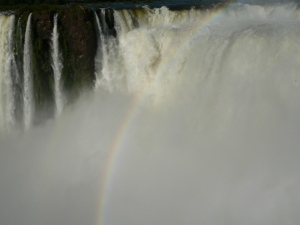What we did on our fall vacation:
Immersed ourselves in spring.
Each day balmier than the one before, with occasional chilly rain. Crescent moon from another point of view, an unfamiliar family of constellations in the night sky.
In Lelé de Troya’s green room (there are also red, yellow, and blue rooms), Malbec by candlelight, the Beatles, two couples celebrating 25th wedding anniversaries reminiscing about disco dancing in NYC, leisure suits, and long-ago first jobs. Finishing dessert at midnight while the rest of Buenos Aires just gets started.
Talking with many a taxi driver (Claudio, Lila, Juan, and a few more whose names I don’t recall) thanks to one of our foursome’s exuberant Spanish. (Buenas noches! Cómo estás? Yo hablo español pero no comprendo nada. Háblenos de Buenos Aires.) Our drivers are warm, friendly, opinionated, proud of their city but wanting things to be better, eager to speak with us. Trying to follow their rapid-fire Spanish, wishing we understood more.

Spanish haiku in the Japanese Gardens, a circle of Spanish-speaking Japanese women deep in conversation under a silk floss tree.
Reading in bed Pico Iyer’s Falling Off the Map: Some Lonely Places of the World, disliking his essay on Argentina in which he contends people here strive for the wealth and sophistication of Europe, but are only pale imitations of it. True for some, perhaps, but I see down-to-earth, hard-working Argentinians and a genuine, vibrant culture that is what it is.
Watching amazing tango dancers, learning the tango was partly invented by Italians who emigrated to La Boca, a working class section of Buenos Aires. Never before realizing the inventiveness and variation possible within the structure of tango.
More reading in bed after a long day walking the city, Lawrence Thornton’s novel, Imagining Argentina. Letting myself imagine, for a moment, what it would be like to have one’s teen-age daughter stolen away to the pampas in the night, never to be seen again. Recalling the crosses and banners of the Mothers of the Plaza de Mayo we’d seen.
Iguazu evenings, drinking Caipirinhas in the secret garden of our bed and breakfast run by a photographer from Calcutta who has spent forty years in Argentina. John cares deeply about local flora and fauna and plans to offer walk-about tours to teach people about the region’s ecology. Meeting Natalie (British), Christina (from Mexico, now British) Helen and Andre (British and South African, respectively, now living in Austria). And some Argentinians from Buenos Aires who say the middle class here is disappearing. Does that sound familiar?
In Iguazu National Park, hundreds, thousands of butterflies: deep purple on brown, art deco, Italian modern. They hitch a ride on our hats, sleeves, shoulders. Clusters of mint green and yellow-winged moths delicate as parchment, scattering like confetti in the wind. Monkeys, coatis, lizards, turtles, toucans.

Ending our trip viewing some of the 300 waterfalls in Iguazu. People from all over the world come to this remote place where Argentina, Brazil, and Paraguay meet. Standing before the immense, overwhelming Garganta del Diablo (the Devil’s Throat), welcoming the cool spray after our subtropical hike. Like Andre said one evening after he and Helen braved a boat that takes you as close as you can get to one of the biggest waterfalls, every particle of your body awakens.
You feel totally alive.
If you’ve been to Argentina or can suggest good books about this beautiful country, please tell us in the comments below.
Zen in Nature
I was interested to read “Finding Zen in a Patch of Nature” in the New York Times today. David Haskell’s new book, The Forest Unseen: A Year’s Watch in Nature sounds wonderful. Plan to add it to my reading list.


